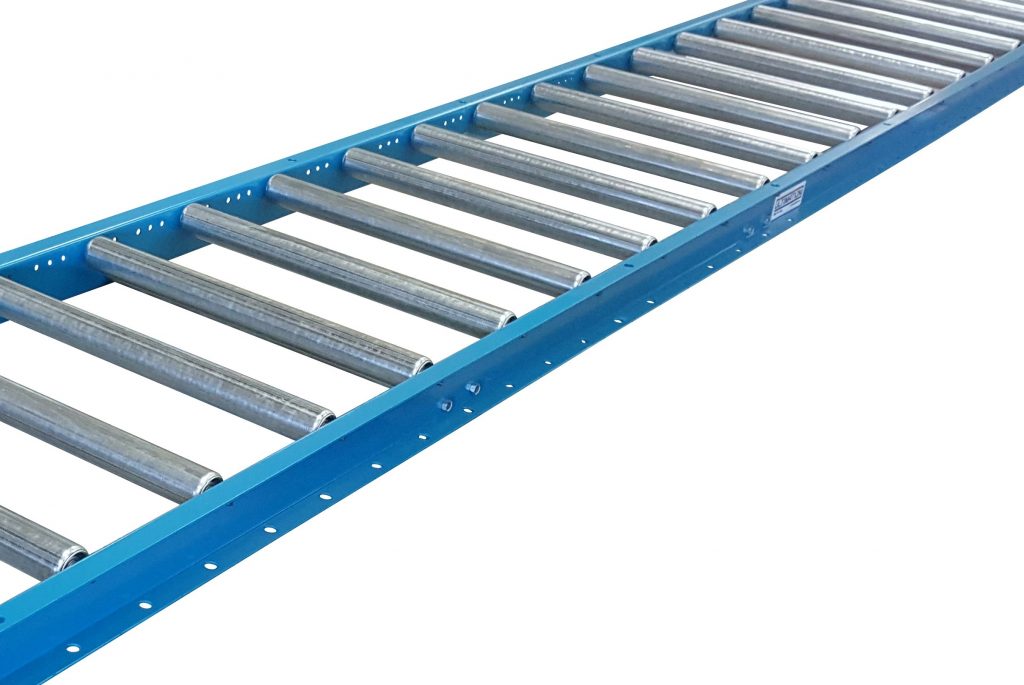Conveyor rollers help to make light work of transferring equipment around with negligible time and effort, and thanks to the engine driven possibilities, they require reduced manpower as well. From wheels, belts and built in rollers there is a wide selection of rollers offered on the present day market, regardless of whether you go with a continuous-duty motor or physically powered unit.
Rollers are likely to be designed to move bulk elements, and there are many different different types of rollers for particular activities. Rollers and other conveyors have the ability to lift up material, use vibratory action to safely move product, and hang from overhead. Other popular types include screw conveyors, chute conveyors and tow conveyors.
Lets take a closer look at some of the main types of conveyor.
Conveyor Rollers
These are handling techniques which use rollers mounted in frames to safely move materials. The factors it is advisable to take into account will be the load capacity and circumference, combined with the conveyor length and width. Roller conveyors will often be utilised in holding areas for instance loading docks, travel luggage handling or construction lines. Rollers use gravitational forces or manual power to transfer goods around and can be straight or curved depending upon location or operating environment.
Powered roller conveyors use powered rollers secured with frames to move merchandise and products about. The principle aspect to consider is the sort of drive that you require. The most important drive varieties include belts, chains and motors. Powered roller conveyors have several functions, which includes food handling, packaging and many other construction line businesses.
Wheel conveyors use unpowered wheels to manoeuvre goods, either by gravity or manual power. If purchasing a wheel system, you have to think about load potential, the physical proportions and the electrical requirements. Wheel conveyors are typically utilized for loading and unloading motor vehicles, in addition to relocating large weighty objects along the lines of pallets. Depending on weight criteria, wheel numbers and spacing may differ.
Vibrating conveyors use rotary or linear vibration to transport product or items along. They may be commonly used to move bulk materials like gravel and coal. Depending on the required use, many sizes are available.
Overhead conveyors are installed to ceilings and employ carts moved by chains, wires or other connections. They are most often used in business sectors in which the product is required to be hung, for example parts handling systems, or for air conditioning applications. Dependent upon the expected use of the overhead system, the load transporting capability is quite important. The majority of platforms are motorized though you can find the ones are hand controlled.
Belt conveyors use continuous belts to manoeuvre product. There’re commonly utilised in food suppliers, for baggage handling, in packing and shipping and in the postal service, even when you would most commonly associate them with the cash registers in food markets. Belt conveyors usually are powered and perform at various rates of speed. Belts might be operated horizontally or even at slope inclines.
Beltless magnetic conveyors utilize moving magnets under immobile plates to move magnetic or ferrous material. This is often in the form of scrap metals or equipment parts. Beltless magnetic conveyors can be horizontal, upright or a combination of each of them.
The Role Of Conveyor Rollers
Your options of conveyor system is dependent on the product variety, pace, distance off the ground and marketplace focus particular towards your business. A lot of various kinds of conveyor, such as belts and vibrating units, may be used over long distances in industrial sectors such as mining and raw materials. At the same time, a vibrating belt system will be of little use in food production or technology businesses.
Conveyors could very well be manually operated, which is when products are moved along by hand over the rollers or wheels. Others are air powered or engine powered. In most cases, however, they are driven by electric powered motors. This either occurs directly or through reduction gears, chains and sprockets.
Materials and goods are typically moved on the top surfaces of conveyors, but overhead conveyors could possibly be the most obvious exception.
Roller Supply
If you’re aiming to move goods easily with minimum energy and effort and the highest possible safety, you should take a look at your needs and requirements with care. Your eventual preference will be contingent upon the business in which you operate, a choice of power source (or not) as well as the budget that you’ve got.
Conveyor rollers might be the most simple and flexible system and also one of the most cost effective. Roller systems are also convenient-to-use and maintain and can be customized to a range of business sectors and uses. Systems can be custom-designed to for your available space and rollers can be selected by material, load capacity, velocity and more. This is why conveyor rollers are probably the most widely used choices for UK establishments.
You can find 1,000’s of internet sites with information and facts regarding ‘Roller Conveyors’ this could be amongst the best ones www.conveyorrollers.co.uk
Roller conveyor solutions can be custom-designed from modular components. These include straight sections, contours, transitions, merges, partitioning and a lot more. Manufacturing companies provide design knowledge and set up support, helping you to get the absolute best device for your need. They can also supply you with on-going servicing support and spare parts to keep your systems and your company moving.
If it’s time you expanded your business and you are planning to improve processing, storage, distribution or more, then a conveyor roller system could possibly be just the thing you’ve been searching for.

